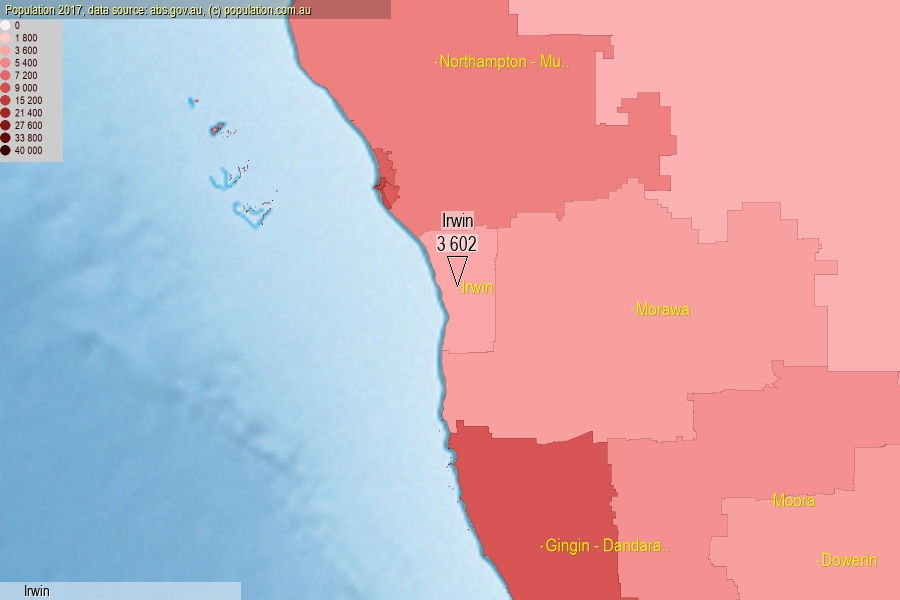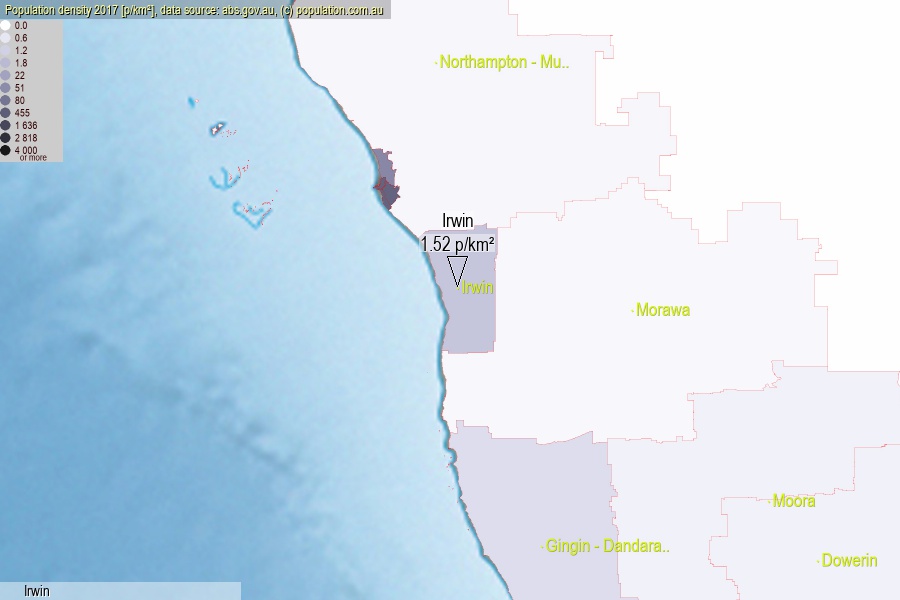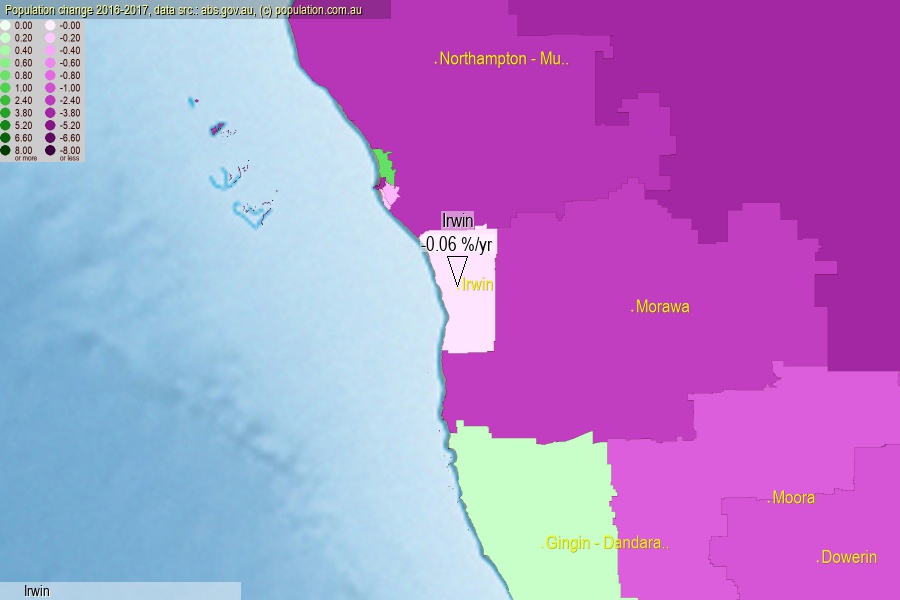 population.com.au
population.com.auLast official estimated population of Irwin (as Statistical Area Level 2) was 3 602 people (on 2017-06-30)[2]. This was 0.01% of total Australian population and 0.139% of WA population. Area of Irwin is 2 369.30 km², in this year population density was 1.52 p/km² . If population growth rate would be same as in period 2016-2017 (-0.06%/yr), Irwin population in 2025 would be 3 586. [0]



Click to enlarge. Irwin is located in the center of the images.
Population [people], population density [p./km²] and population change [%/year] [2]
View borders » (new window) [4]
[2001-2002] -3.09 %/Yr.
[2002-2003] -1.11 %/Yr.
[2003-2004] +0.48 %/Yr.
[2004-2005] +6.29 %/Yr.
[2005-2006] +2.39 %/Yr.
[2006-2007] +1.96 %/Yr.
[2007-2008] +3.72 %/Yr.
[2008-2009] +3.11 %/Yr.
[2009-2010] +1.71 %/Yr.
[2010-2011] +2.89 %/Yr.
[2011-2012] +1.80 %/Yr.
[2012-2013] +0.29 %/Yr.
[2013-2014] -1.25 %/Yr.
[2014-2015] -1.08 %/Yr.
[2015-2016] -1.58 %/Yr.
[2016-2017] -0.06 %/Yr.
[0] Calculated with linear interpolation from officially estimated population
[1] Read more about SA2 and Australian Statistical Geography Standard (ASGS) on abs.gov.au
[2] Population data from Australian Bureau of Statistics (Population and density: 2017; change: 2016-2017)
[3] Digital Boundaries: Australian Statistical Geography Standard (ASGS) 2016.
[4] Border coordinates are simplifyed using Ramer-Douglas-Peucker algorithm.